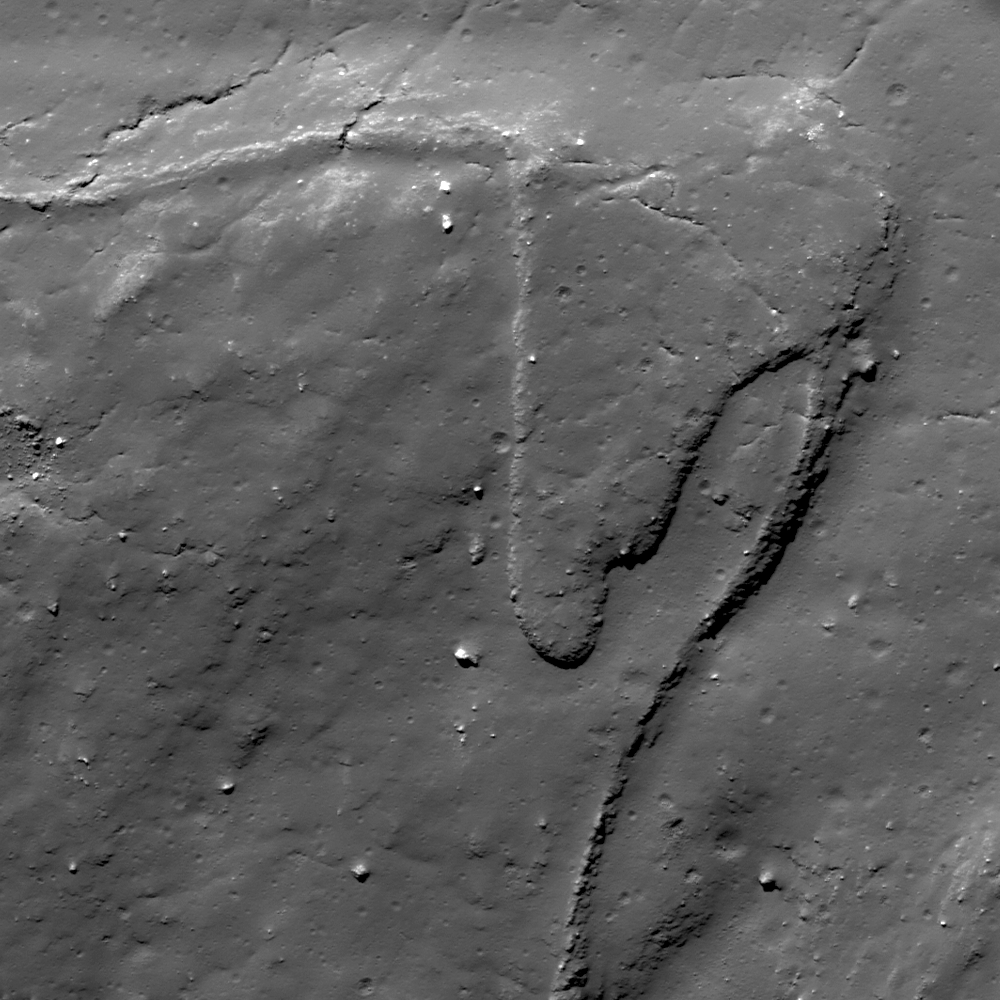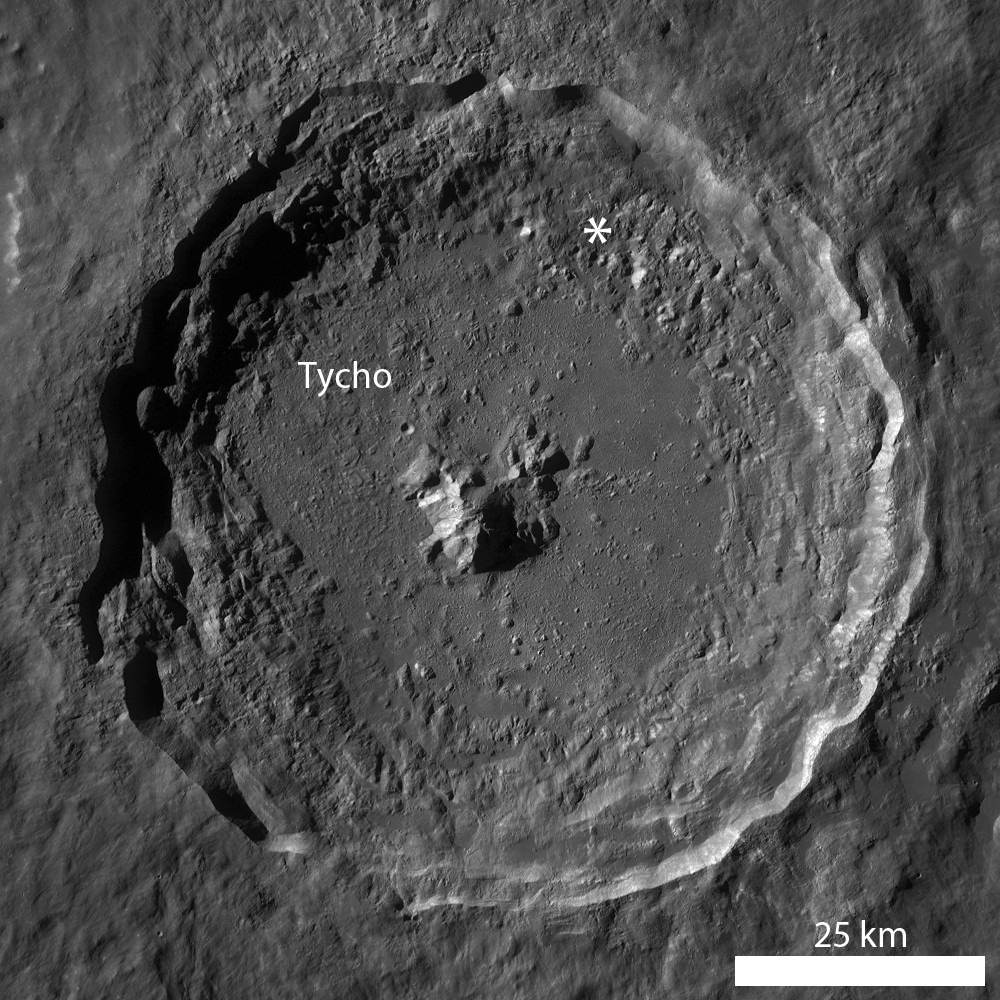
The geology within and surrounding Tycho crater is nothing short of spectacular. LROC images have shown the beauty of Tycho's 2 km-tall central peak, the morphology of impact melt on the crater floor, and the complexity of the exterior impact melt flows. Today's Featured Image once again highlights a geologically fascinating impact melt flow located on a terrace of Tycho's northern wall (42.428°S, 349.190°E).
When substantial amounts of impact melt are generated during the impact process, evidence of ejected melt is observed in the form of exterior melt ponds and flows, as well as veneers and channels within the crater walls. Whether interior melt coalesces to form channels or flows on the crater walls depends on numerous factors, including the viscosity of the melt and the volume of melt distributed on the walls. As melt cools, it becomes more viscous and less prone to flow, and thin veneers of melt splashed on crater walls will cool very quickly compared to thick melt ponds. However, if lots of melt is splashed onto the crater walls, the melt may coalesce and take longer to cool, perhaps allowing flows to form with the increased volume of melt. Channels, however, are believed to require melts of higher temperature (low viscosity) in order to form levees and mechanically and/or thermally erode the terrain in which the channels form. Knowing this information, can you explain the impact melt morphology in the opening image?
The opening image is an area on the northern terraced wall of Tycho that is covered in impact melt. Since Tycho wasn't formed yesterday, a thin regolith layer covers the melt (created by small impacts and micrometeorite impact gardening) and there are boulders eroding out of the slope. Cracks, softened by the thin regolith, abound in this region, and probably represent cooling cracks. There is a levee-like feature winding from the upper left to the lower right that probably was formed by impact melt that coalesced and flowed down the interior walls, essentially representing the flow boundary. However, a tongue-like flow obscures a portion of the levee-like boundary. Assuming that a large volume of melt was channelized where the inside of the channel was toward the right side of the opening image, this late-stage small flow (or drip) bypassed the leveed wall on its descent toward the crater floor. Where did the material composing the small flow come from? Perhaps some melt from the surrounding walls flowed toward the levee-like boundary but got "stuck" and pooled on the top portion of the levee, until the weight of material overcame the levee barrier. Or maybe the tongue-like flow represents a late-stage splash of melt that was ejected and then landed on the wall to drip down toward the crater floor.
What do you think? Scour the full LROC NAC image and see what other impact melt morphologies you can find!
Related Posts:
Giant Flow of Impact Melt
View From The Other Side
Polygonal fractures on Tycho ejecta deposits
Chaotic crater floor in Tycho
Impact Melt Fingers
Melt on a Rim
Published by Lillian Ostrach on 11 September 2012
